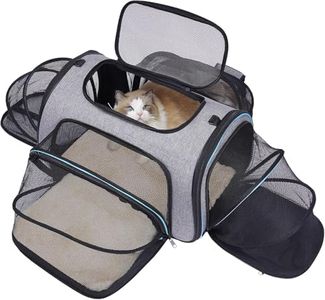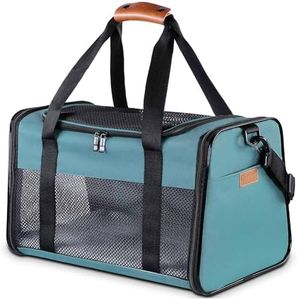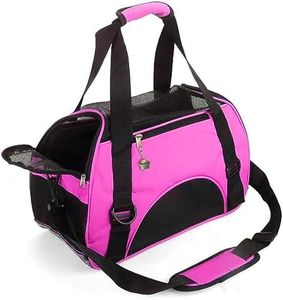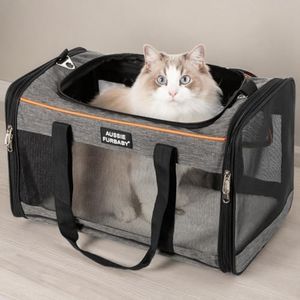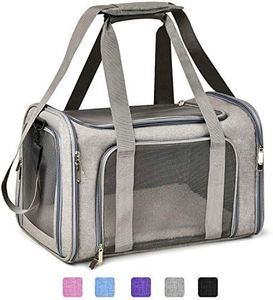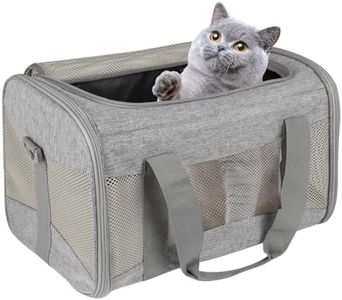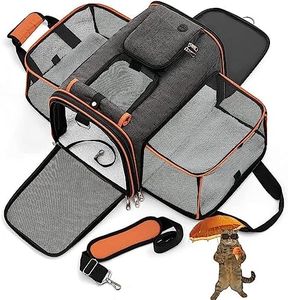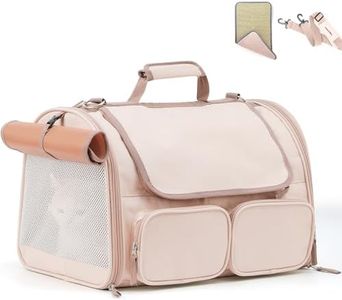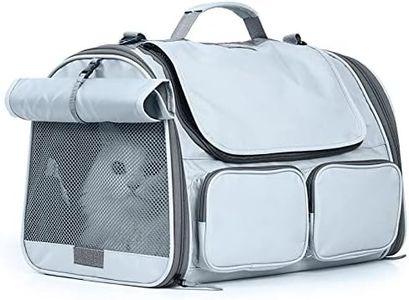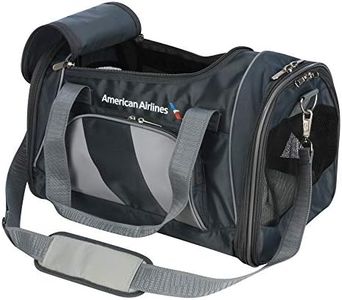We Use CookiesWe use cookies to enhance the security, performance,
functionality and for analytical and promotional activities. By continuing to browse this site you
are agreeing to our privacy policy
10 Best Airline Approved Dog Carriers
From leading brands and best sellers available on the web.Buying Guide for the Best Airline Approved Dog Carriers
Choosing an airline-approved dog carrier is all about making sure your furry friend is safe, comfortable, and fits the requirements set by airlines for in-cabin travel. It’s essential to consider your dog’s size, travel habits, and comfort, as well as the airline's specific restrictions. The right carrier should be cozy enough for your dog to feel secure, portable for you to carry, and compliant with airline standards so you don’t face any surprises at the airport. Keeping your pet’s experience as stress-free as possible is as important as following the airline rules.Size and DimensionsThe size and dimensions of the carrier are critical because airlines have strict rules about what can fit under the seat in front of you. Typically, carriers should be large enough for your dog to stand up, turn around, and lie down comfortably, yet small enough to meet the airline's maximum size limits. When looking at carrier sizing, measure your pet’s length and height and compare them to the carrier’s internal dimensions, and then to the airline’s published limits. If your dog is a little larger, check with your airline for their maximum allowed carrier size. Always aim for the carrier that is just big enough for your dog but no bigger, as excess space can make it harder to comply with regulations and can also let your dog slide around during turbulence.
VentilationVentilation refers to the amount and placement of mesh or screened openings on the carrier, which allow for airflow so your pet can breathe easily and stay cool. Carriers typically offer ventilation on one, two, or more sides—the more, the better for airflow and visibility. For very short trips or calm, non-anxious dogs, two ventilated sides may be fine, but for longer flights or warmer climates, pick a carrier with ventilation on at least three sides. Good ventilation keeps your pet calm and prevents overheating.
Material and DurabilityThe material and construction quality of the carrier affect both your dog's safety and your convenience when travelling. Soft-sided carriers are the norm for in-cabin travel because they can flex to fit under the seat, but the fabric should be sturdy enough to resist scratches, bites, and general wear. Look for carriers with strong stitching, reinforced corners, and durable zippers—especially if your dog gets nervous and might chew or scratch. Softer, lighter materials are easy to carry, but don’t compromise on strength if your dog is active or heavy.
Entry Points and AccessibilityEntry points refer to the number and placement of openings on the carrier, such as doors or flaps. Some have top, side, or even end access. Multiple entry points make it easier to load and unload your pet, particularly if they’re anxious or don’t like being confined. If you have a calm, small dog, a single side or top entry might suffice. For larger or nervous dogs, choose a carrier with two or more openings, so you can gently coax or lift your pet as needed—this makes check-ins and TSA inspections less stressful.
Comfort FeaturesComfort features include things like a padded floor, soft lining, built-in leash hooks, and privacy flaps. These features help your pet feel comfortable and secure in strange environments. If your dog is especially anxious, look for a carrier with soft, washable padding and privacy panels that can cover the mesh when needed. For animals used to crates or enclosed spaces, a cozy, cave-like carrier works well; otherwise, extra padding or removable bedding makes extended travel more bearable.
Carry Options and PortabilityCarry options describe how you can transport the carrier—a shoulder strap, handle, backpack straps, or even wheels. The best option depends on your dog’s size and your own preference for hands-free convenience. For small dogs, a handheld or over-the-shoulder carrier is easiest. For heavier pets, wheels or backpack options reduce strain as you move through the airport. Think about how much walking you’ll do and what feels easiest for you.
Compliance with Airline RequirementsCompliance means a carrier is built according to common airline standards, but not every carrier is approved by every airline. Look for those labeled 'airline-approved,' but always check your airline’s specific regulations—these may differ in size allowed and overall design. Contact your airline before you buy to ensure your carrier will be accepted. The most reliable approach is to match both the size and style to airline specifications, rather than just trusting a manufacturer’s claims.
